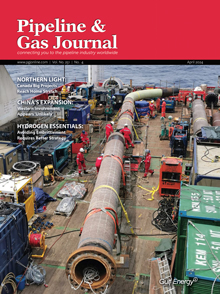Shrinking U.S. Oil Stocks Point to Market Rebalancing
commentary
By John Kemp
LONDON (Reuters) — Excess petroleum inventories are being absorbed as lower prices compel U.S. shale producers and the members of OPEC+ to limit their output, confirming the market is on course to rebalance in 2021.
In the United States, total stocks of crude oil and petroleum products have fallen in 10 out of the last 11 weeks, according to data from the Energy Information Administration (“Weekly petroleum status report”, EIA, Oct. 7).
U.S. petroleum inventories have fallen by a total of 56 million barrels since the middle of July, partially reversing an earlier build up of 224 million barrels since the onset of the epidemic in the middle of March.
Total inventories are 11% above the five-year seasonal average, down from a surplus of 14% three months ago, with most of the remaining surplus concentrated in crude and middle distillates such as diesel.
Gasoline inventories are slightly below the five-year average for the first time since March, having been almost 13% above it in April, at the height of the lockdowns.
U.S. crude stocks excluding the strategic petroleum reserve are 12% above the five-year average, but the surplus has shrunk from almost 19% in July.
The largest surplus is in distillate fuel oil, where stocks are 22% above average, down from 29% in early June.
Distillate stocks remain high as a result of the weakness of passenger aviation, which has slashed jet fuel consumption, and led to surplus jet being down-blended into the diesel pool.
Refineries have responded by restricting crude processing to bring refined stocks down further, while maximizing the tilt in favor of gasoline and against distillate fuel oil and jet fuel.
Crude processing was 13% below the five-year average last week, while the volume of refined products supplied to the domestic market was 9% below the average.
At the same time, the ratio of gasoline to distillate and jet fuel production hit the highest for more than a decade, as refiners tried to meet gasoline demand while drawing down excess distillate stocks.
Production cuts by OPEC+ and U.S. shale firms are slowly working down the surplus in the crude market, while refiners in the United States and the rest of the world are gradually digesting the diesel surplus.
But the process is slow and vulnerable to any resurgence of the coronavirus; a new round of national lockdowns and further curbs on international aviation; or a renewed downturn in the business cycle.
Editor's Note: John Kemp is a Reuters market analyst. The views expressed are his own.
Related News
Related News

- Freeport LNG Plant Runs Near Zero Consumption for Fifth Day
- Biden Administration Buys Oil for Emergency Reserve Above Target Price
- Mexico Seizes Air Liquide's Hydrogen Plant at Pemex Refinery
- Kinder Morgan Declares Force Majeure on West Texas Gas Pipeline After Fire
- Williams Delays Louisiana Pipeline Project Amid Dispute with Competitor Energy Transfer
- Venezuela Proposes Alternative Payment Plan as Weak Bids Surface in Citgo Auction
- Baker Hughes Wins Contract for Huge Aramco Gas Expansion Project
- Enbridge Picks Contractors for Great Lakes Tunnel Project, Securing Line 5 Pipeline Route
- Russia's Gazprom Sees Worst Loss in Decades as European Gas Sales Collapse
- Shell Nigeria Inks $100 Million Gas Pipeline Deal with Oyo State





Comments